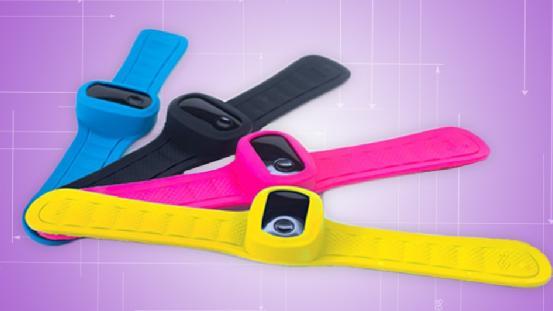The United States Develops "Dynamic Felt" As An Inner Cushion For Heating And Charging.
Researchers at Wake Forest University have developed a thermoelectric device called "dynamic felt", which can convert human body heat to electric current by touching it, so that the cell phone battery will soon have enough power to make the next call.
The research results are published in the Journal of nanoexpress.
Researchers at the University's Center for nanotechnology and molecular materials said that this device locks tiny carbon nanotubes into flexible plastic optical fibers and feels like fabrics.
The technology uses the difference in temperature to generate electricity to charge, such as room temperature and body temperature.
The "dynamic felt" can be placed on the car seat to ensure the power demand of the battery. It can also collect heat under the insulated pipe or roof tiles to reduce the gas or electricity charges, or as a microelectronic charging device in clothing or wrap around the injured position of the vein to better meet the medical needs of the patient.
Researcher
Kohu Etter
We waste a lot of energy in the form of heat, but we can recapture these energy sources, such as "recapture" the energy wasted by cars to increase fuel mileage and increase power to radio, air conditioning or navigation systems.
Generally speaking, thermoelectricity is an underdeveloped energy capture technology, but there is still much room for development.
David Carol, director of the center, said, "imagine that the" felt felt "is wrapped around the flashlight as an emergency accessory and can be recharged to the mobile phone to listen to the weather forecast.
The device can be used to deal with emergency situations such as power cuts or accidents. "
Researchers say that the cost of thermal power does not make it more widely used in mass consumer products.
The standard thermoelectric device uses more than one kind of bismuth telluride.
Chemical compound
Related products, such as mobile refrigerators and CPU radiators, efficiently convert heat into electricity, but it costs $1000 per kilogram.
If you add the "dynamic felt" to the phone cover one day, the cost may be only $1.
At present, the
Textile
The stacked 72 tube layers can generate about 140 NW power.
The team is evaluating several more ways to add carbon nanotubes to improve output power even in a thinner condition.
Hewett said: "although there is more work to be done before the" power felt "is ready to enter the market, it has been envisaged that it can serve as a thermoelectric liner for the warm coat, and it can keep people warm and cold when the outside is very cold.
If the power felt is sufficiently efficient, it can also provide electricity for iPod, and its endurance will never be disappointing.
This is definitely just around the corner. "
- Related reading

After 11, Chopped Hands: Amy Synchronized The US Black Five Shopping Season?
|- neust fashion | Vans Little Strawberry Is Out Of Stock. How Much Is Vans Strawberry?
- Expert commentary | Does PTA Still Have Room To Rebound When Costs Collapse?
- Company news | Soft Clothing Annual Consumption Of Up To About 200000000000, All Kinds Of Fabric Art Become The Protagonist.
- Company news | Termination Of The Acquisition Of KUKA Door Mattress Short Board Difficult To Fill
- Company news | On Saturday, 2018, Net Profit Fell 211 Brand Chain Stores.
- Company news | If You Only Spell Speed, H&M And Zara Will Be Left Behind By Their Peers.
- Company news | Valentino Growth Lackluster Is Being Sold And How To Seize Growth Opportunities Is Still Being Explored.
- Company news | The "Secret Warfare" Of The Three Sports Giants In China
- neust fashion | Suicoke X GOLF WANG Joint Slippers Online
- Pregnant baby | Anta's Never Ending Acquisition Of AMF Is Just The Beginning.
- Fuzzy Field In The Field Limit Swap Swap Futures "Coat"
- Flexible Pricing Makes Clothing Store "Off-Season Not Light".
- Folding In Winter Keeps You Fashionable And Warm.
- The Lightest Is Only 150 Grams Of "Thermal Energy" Clothing.
- High Tech Concept Underwear "Get Together"
- Double Breasted Coat Returns To Women.
- High Performance Fiber Is Expected To Usher In The Golden Period Of Development.
- Holiday Economy Boost US Stocks To New Heights
- This Winter Dress Is Different - The Price Is A Bit Hot, The Sales Volume Is A Bit Cold.
- The Stock Market Is Expected To Rise Sharply After The Stock Market Is Expected To Rise Sharply.
